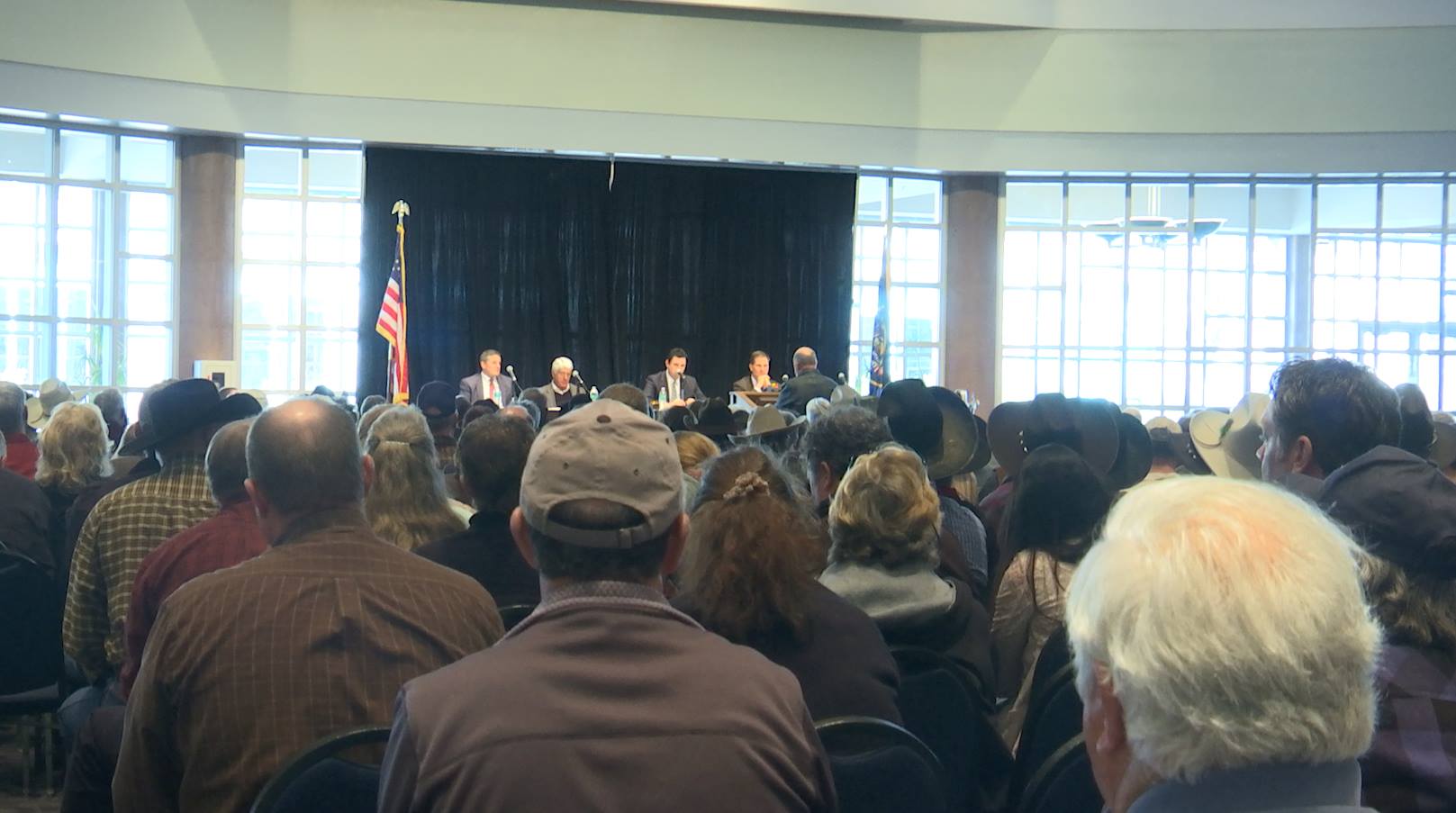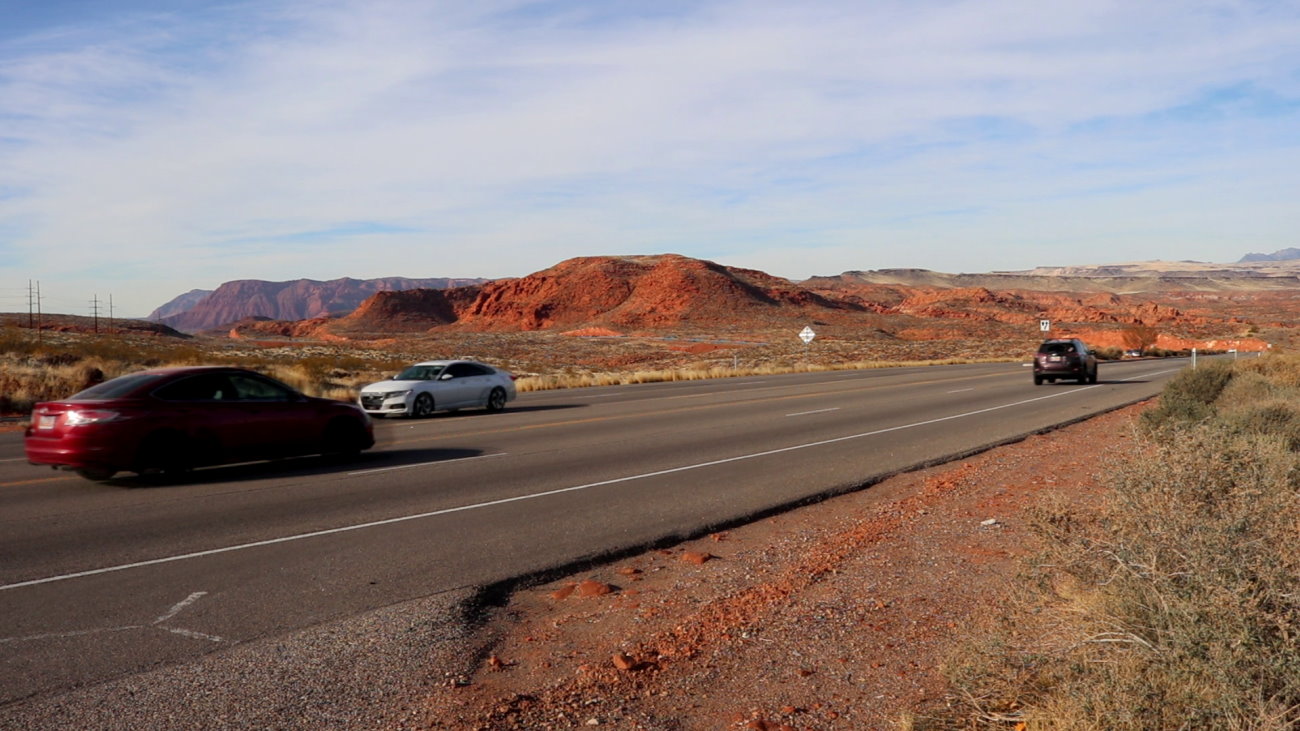ST. GEORGE — A four-lane roadway moving through protected desert tortoise habitat in Southern Utah may be a step closer to becoming reality.

The Bureau of Land Management and U.S. Fish and Wildlife Service released the final environmental impact statement for the Northern Corridor last Friday. Out of six alternatives originally listed in the impact study, federal agencies have designated a route proposed by the Utah Department of Transportation as their preferred alternative.
The alternative includes the addition of 6,800 acres to the Red Cliffs Desert Reserve and Red Cliffs Conservation Area as an offset for tortoise habitat that would be disrupted by the Northern Corridor.
The final impact study is not the final decision on the Northern Corridor. The public has until Dec. 14 to review the document and offer protests accordingly. A record of decision concerning the fate of the highway will be issued sometime following the protest period.
The final environmental impact statement can be found on the federal registry here.
Supporters of the Northern Corridor claim the roadway – which would connect to Washington Parkway on its east end and cut through the desert reserve and connect to Red Hills Parkway on its west end – is a vital piece of transportation infrastructure moving into the future.

Northern Corridor opponents, such as Conserve Southwest Utah, have argued that the roadway will do irreparable damage to the desert reserve and conservation area and further erode attempts to save the threatened Mojave desert tortoise. Building a road through federally protected land also sets a troubling precedent and does not mesh well with the mission of federal lands agencies, they claim.
“Conserve Southwest Utah, our partners, and local residents have invested an enormous amount of time into the Northern Corridor Highway proposal and we’re very disappointed to see that the final report addresses none of the critical issues raised in our comments on the draft report,” Conserve Southwest Utah’s public lands program director Sarah Thomas said in a press release. “The preferred route would also damage public lands that protect cultural resources and provide recreation opportunities.”
State lawmakers and local official have said a designation for a right-of-way through the desert reserve for the Northern Corridor was promised to the county in a 2009 omnibus lands bill passed by Congress. However, federal agencies were slow to move on approving any such right of way due to its passing through critical habitat.

Local BLM officials were called before congressional officials during a field hearing of the House Natural Resources Committee held in St. George in 2016 and were blasted for not considering the Northern Corridor in the creation of their draft resource management plans for the Red Cliffs National Conservation Area.
“This subcommittee doesn’t normally hold hearings on individual land use plans,” Rep. Tom McClintock, R-California, federal lands subcommittee chair at the time, said during the hearing. “But it appears that the BLM, which administers nearly half of the land area of Washington County, has ignored the will of Congress and thumbed its nose at the people whose taxes support this government and whose livelihoods and quality of life are now directly threatened by it.”
Pending approval, the proposed Northern Corridor will also see the renewal of the Washington County Habitat Conservation Plan, which governs how the Red Cliffs Desert Reserve is run.
The desert reserve was created in 1996 as a place desert tortoises could be taken and protected so the rest of Washington County could continue to grow and develop. The Habitat Conservation Plan, which is administered by a mixed committee of local, state and federal stakeholders, expired in 2016.

Though expired, the conservation plan was allowed to continue operating while a new plan was drafted and approved. The revision would renew the plan for 25 years and include the Northern Corridor and the incorporation of the 6,800 additional acres located between Santa Clara and Bloomington Hills for tortoise habitat.
The new plan was approved by the Washington County Commission last month.
Tom Butine, Conserve Southwest Utah’s president, said there are still unanswered questions that federal agencies need to address. This includes the impact of recent wildfires within the reserve, cost estimates of the project and the use of federal lands related to buying private holdings within the reserve that are in the path of the proposed roadway.

“The estimates for the alternatives outside the Red Cliffs National Conservation Area are based on incorrect assumptions and designs, which inflates their costs,” Butine said in a press release. “We’ve identified those issues and suggested resolutions, but that input was apparently ignored. …We’re confident that the incoming Department of Interior leadership and the courts will agree this highway is illegal.”
In an effort to secure the creation of the Northern Corridor, Utah Rep. Chris Stewart introduced congressional legislation that would make the building of the highway a matter of law. Stewart originally introduced the legislation in 2017 and reintroduced it more recently in August.
The BLM and Fish and Wildlife Service will be accepting protests of the impact study through Dec. 14.
All protests must be in writing, either as a hard copy or electronically via BLM’s ePlanning website by the close of the protest period. The only electronic protests the BLM will accept are those received through ePlanning here.
All protest letters sent to the BLM via fax or e-mail will be considered invalid unless a properly filed protest is also submitted. The ePlanning page includes a tool for submitting a valid protest electronically.
To learn more about filing a protest on the final environmental impact statement, visit the BLM website.
Copyright St. George News, SaintGeorgeUtah.com LLC, 2020, all rights reserved.